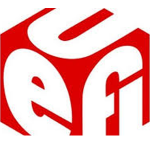UEFI BIOS

UEFI BIOS in FORSIS industrial PCs
Currently, FORSIS is converting the industrial computer series to the INTEL CORE-i SKYLAKE CPU generation. Further information can be found here.
This change of the system board not only brings with it the technical advantages of the new CPU generation, but also a change in the BIOS from LEGACY to UEFI. Below you will find further information.
BIOS stands for "Central Input and Output System."
What is meant by this is a control unit that manages and controls the individual components of the computer, e.g. the CPU.
The main task of the BIOS is to make the computer ready for operation. When the system starts, the BIOS initializes the individual components on the mainboard of the PC and then checks the functionality of the PC.
It then hands over control of the PC to the operating system installed on the computer. The BIOS can also be used to change system settings and switch individual components and interfaces on and off.
A unified extensible firmware interface.
The basic tasks of UEFI are basically the same as BIOS, but it also offers some additional functions. UEFI was created at the initiative of Intel, AMD, Microsoft, Hewlett-Packard and other hardware manufacturers. The aim was to develop an easier-to-use interface that makes better use of the graphical possibilities of modern hardware than the conventional BIOS. On Windows computers, UEFI is only used on 64-bit operating systems.
- The BIOS is limited to the VGA resolution, i.e. pure text mode and must be operated with the keyboard. UEFI, on the other hand, can be partially operated with the mouse, usually depending on the board.
- UEFI contains all important drivers that Windows needs for the system start. This enables, for example, a faster boot because the UEFI BIOS includes a standard driver for the network card. It is also possible to access the network without an operating system, e.g. to download and install firmware updates.
- Updates can be loaded and installed directly with UEFI - with the BIOS, the update must first be downloaded to a computer before the BIOS can be programmed
- Hard drives are partitioned differently with UEFI: Instead of just 4 primary partitions (BIOS), UEFI can set up up to 128 partitions
UEFI can process storage media up to Z bytes in size (BIOS: 2.2 TB = 32BIT) - UEFI offers advanced security features such as TPM chip support and Secure Boot
The goal of TPM: Only software that is considered trustworthy is allowed on the system. In this way, viruses and malware should be combated consistently. The data is also stored encrypted on the computer.
The requirements for TPM:
A special chip (TPM) and an operating system that supports this technology, e.g. WIN10.
Microsoft requires device manufacturers with WIN10 as the operating system to equip the Trusted Platform Module, currently still voluntary.
A device with a TPM chip, a specially adapted operating system and the appropriate software together form a Trusted Computing platform (TC platform). Such a "trustworthy platform" can no longer be used contrary to the interests of the manufacturer.
Secure Boot is part of the UEFI specification that is intended to guarantee the authenticity or genuineness of important software parts of the firmware. Critical parts of the firmware, such as the OS loader, should only be executed if they have previously been authorized to do so by a trustworthy institution. Among other things, this excludes rootkits that nest before the operating system (OS) boots.
ATTENTION: Update capability from WIN7 to WIN10 - software distribution
There are limitations when upgrading from WIN7 to WIN10. Only the LEGACY MODE can be used. The intention to operate WIN10 in UEFI MODE requires the reinstallation of WIN10. On the one hand, this is due to the partition management and, on the other hand, that various driver elements are integrated in the UEFI BIOS. When using a SW distribution that is organized on the basis of PXE boot, the PXE server must also support UEFI BIOS.
You can find more background information on the changeover, as well as basic information about the INTEL CPU CORE-i series, in the article on SKY LAKE architecture.

"Wir beantworten gerne Ihre Fragen."
